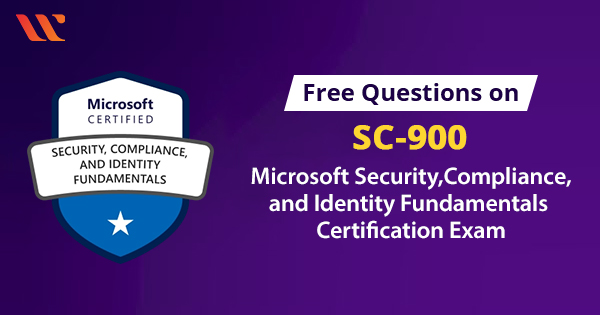In this blog, let us discuss how to secure Microsoft Copilot in the Power Platform, ensuring security and compliance norms. It is a fundamental topic in the Microsoft Copilot: Power Platform and Security Best Practices, protecting an organisation’s data.
An Introduction to Microsoft Copilot – Power Platform and Security Best Practices
The Microsoft Copilot – Power Platform and Security Best Practices certification is all about gaining knowledge and awareness of this AI-embedded tool in Power Platform. It leverages Azure OpenAI, assisting users in creating solutions with natural language prompts. Be it designing Power Apps, automating tasks in Power Automation or generating insights in Power BI, it’s simplified using Copilot in Power Platform – contributes to a wide range of automation.
Integrating Microsoft Copilot in Power Platforms has revolutionised how businesses build applications, automate workflows, and analyse data. Its AI assistant enhances productivity in low-code environments, which directly implies that its security guidelines are strong. It allows users to build apps, automate workflows, and analyse data using natural language prompts.
Its integration with Dataverse and connectors makes it a vital asset that enables building secure AI workflows. With Microsoft Power Platform, Governance is obvious to make development fast and take smart decisions. The Copilot, which is a Secure AI in a powerful platform, provides custom solutions without any additional coding knowledge. It brings data and action together, making businesses perform more efficiently while maintaining Copilot Data protection and compliance.
Capabilities of Microsoft Copilot
Microsoft Copilot with Gen AI integration into Microsoft 365 and Power Platform enhances productivity, automates tasks, and supports decision-making. Using large language models, combining with organization data to deliver intelligent suggestions and automations.
- Power Apps
It’s a natural language processing tool where the user describes what they want, and the Copilot generates it. E.g.: Build an App to track calorie intake, it does it for you. And the AI-powered controls use an AI model directly in apps without coding. - Power Automate
They manage workflow generation via natural language, where giving a task description enables the copilot to build the flow as requested. It also helps with optimisation and suggests bottlenecks to resolve. - Power BI
The Data insights via Q/A were where we asked questions to a natural language processor, and the tool created visualisations. Based on the narration, it auto-generates insights, summaries, reports, analysis trends, anomalies, and more.
Why Security Matters in AI-Powered Platforms?
As AI integrations introduce new layers of complexity in the enterprise environment, Microsoft Copilot contributes towards enhancing productivity. But it has a high chance of increasing risk in case of data exposure, unauthorised access and misuse of automation capabilities. Any sensitive business data is surfaced through prompts, which makes it critical to enforce strict access controls, rules for handling data, and a monitoring mechanism protecting from both unintentional and malicious attacks.
As Microsoft follows a defence-in-depth strategy, cloud services include Power Platform. It’s built on a zero-trust framework where the platform offers enterprise-level security tools, including Microsoft Defender, Purview, DLP policies and Azure AD Conditional Access. They combine to ensure security, compliance, and resilience against attacks.
Security Challenges Faced by Microsoft Copilot
Despite Microsoft Copilot’s Security improving productivity, it can also introduce risks that shall affect proactive Power Platform security policies. It’s important to address these challenges in critical scenarios to secure Microsoft Copilot and protect sensitive data.
- Some Potential Data Security Risks
The major strength of Copilot in the power platform is data access, which at the same time brings in vulnerabilities such as
- Data exposure through overly permissive settings, which exposes all sensitive data.
- Unauthorised access through misconfigured permissions could unintentionally extend to access data.
- Prompt risks are happening often when a malicious input is forged into the Copilot Data Protection.
- In terms of integrating with third-party tools, it could end in external leakage.
- Not implementing Copilot risk mitigation strategies would lead to mitigation.
- Compliance Considerations
For regulated sector organisations, Microsoft Compliance and security standards are completely non-negotiable. Utilising Copilot in the Power Platform requires alignment with
- GDPR to protect personal data privacy
- HIPAA, which safeguards healthcare information
- Data Residency adhering to regional regulations
Best Practices for Securing Microsoft Copilot
Organisations adopt Power Platform security best practices to secure Microsoft Copilot in Power Platform. Listed below are some of the best practices that can be adopted.
- Implementing Role-Based Access Control in Power Platform
It limits data access to authorised users by defining roles in the Power Platform Admin centre. It prevents oversharing and enforces Copilot data protection. Brought together to enhance Microsoft Copilot security. - Enforce Data Loss Prevention in Power Platform
The Data Loss Prevention (DLP) in the Power Platform policy blocks the sensitive data from leaving the ecosystem. Its setup is in a way to configure the rules to restrict risky connectors. It strengthens AI in power platforms, preventing Copilot from sharing data with unapproved apps. - Microsoft Defender for Cloud Apps
The Microsoft Defender policy for Cloud apps supports Microsoft Copilot security by monitoring every cloud activity. It can detect threats, alert to anomalous behaviour, and implement enforcement policies. It’s seamless in terms of supporting security for the Power Platform. - Enable Conditional Access and Identity Protection
The identity-based controls enhance secure Microsoft Copilot deployment with conditional access. It restricts access by device location. It provides Identity protection with signing via Azure AD and protects against unauthorised access risks.
Tools and Resources from Microsoft for Security and Privacy
- Security Baseline for Power Platform
A variety of Microsoft-recommended configurations and policies secure power platform usage with tenant-level controls, Environmental segregation, data loss prevention (DLP) policies, conditional access, and MFA. Which helps governance to enforce and reduce risk while using AI - Microsoft Purview
A Unified Data governance solution that manages and protects data sensitivity across the ecosystem, Microsoft Purview embodies features like Data classification and labelling, Information protection policies, Sensitive data scanning, and integration with Copilot to ensure responsible data use. - Compliance Manager
This helps assess compliance with GDPR, ISO 27001, and HIPAA standards. Providing Pre-built assessments, Risk scoring, and Improvement actions, ensuring Copilot remains aligned with industry regulations. - AI Model Transparency and Explainability Tools
There are Microsoft provider tools to improve trust and understand AI outcomes. The Responsible AI dashboard that visualises the model, performance, truth and accuracy. It also offers Interpret ML with expandable features and flags potential harm. They ensure in making audited, explainable and fair outputs from Copilot.
Governance and Compliance in Power Platform
There are three levels of operation to ensure Governance and compliance in the power platform are done right, ensuring effective implementation.
- Setting Up a Secure Environment
The key to power platform security is isolated environments. By creating development, testing and environments, applying tailored DLP and RBAC settings limits the scope and enhances risk mitigation. - Monitoring and Auditing User Activities
Giving visibility on the usage of Copilot strengthens security. By using Power Platform logs and the Copilot dashboard to track prompts and data interaction, one can ensure compliance and identify risk. - Vitalising Microsoft Security and Compliance Centre
It centralises governance by providing Sensitivity labels, retention policies, and eDiscovery. It classifies outputs for compliance and aligns with Microsoft’s compliance and security standards. - Audit and User Behaviour Analysis
The Audit logs are records of activities and events in the system application, cloud services, etc, giving a precise indication of who did what, where, when and how. While the UBA uses machine learning and data analytics to monitor users’ typical behaviours, it flags deviations from the usual norms and beyond static rules and behavioural baseline, detecting threats.
To Conclude
Microsoft Copilot, Power Platform, and Security Best Practices are important for AI safety. To maximise the benefits of Copilot, the organisation should prioritise the power platform security. With its role-based access control, it prevents data loss in the Power Platform. Enhance your Microsoft career path with security and threat detection nuances learned from our curated video courses. And reach out for any assistance.
- Developer to AI Engineer: AWS AI Career Path for 2026 - December 19, 2025
- How to Prepare for SAP-C02 After AWS Associate? - December 10, 2025
- Complete Overview of Microsoft AB-900, AB-730, AB-731, AB-100 - December 3, 2025
- Step-by-step guide to prepare AWS AIF-C01 in 2025 - November 3, 2025
- 7 Reasons to Get Scrum Master Certification in 2025 - September 30, 2025
- Top Microsoft Azure Courses to Learn in 2025 - September 17, 2025
- Top Cloud Computing Courses to Learn in 2025 - September 10, 2025
- How to Pass the GH 900 GitHub Foundation in 2025? - August 6, 2025





